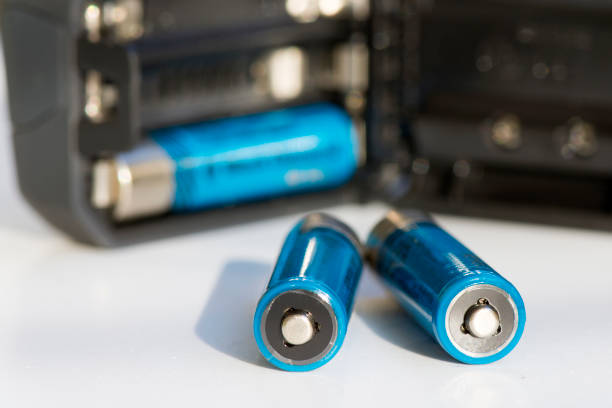Portable laser welders improve accuracy and efficiency in Hong Kong
In Hong Kong, portable laser welders are transforming the welding landscape, improving accuracy, saving time, and reducing costs. This technology is particularly beneficial in several sectors, including manufacturing and construction. A closer look at the different models, pricing structures, and practical applications reveals their growing importance in welding manufacturing processes. Furthermore, effective welding training for workers is essential to maximize the potential of these advanced machines.

Manufacturing industries across Hong Kong are increasingly turning to portable laser welding technology to meet growing demands for precision and efficiency. This shift represents a significant advancement from traditional welding methods, as businesses recognize the superior capabilities these machines offer for complex joining applications.
How Portable Laser Welding Machines Work
Portable laser welding machines operate by generating a concentrated beam of coherent light that creates intense heat at the point of contact. The laser beam melts the materials being joined, forming a strong, precise weld without requiring additional filler materials in many applications. These machines typically use fiber laser technology, which converts electrical energy into laser light through optical fibers, delivering consistent power output and exceptional beam quality.
The portability aspect comes from compact design engineering that integrates the laser source, cooling system, and control electronics into a manageable unit. Most portable systems weigh between 15-25 kilograms, making them suitable for field work and varied production environments. The welding process is controlled through digital interfaces that allow operators to adjust parameters such as pulse duration, frequency, and power output to match specific material requirements.
Advantages of Portable Laser Welding in Hong Kong Industry
Hong Kong’s industrial landscape benefits significantly from portable laser welding technology due to several key advantages. The precision offered by laser welding reduces material waste and minimizes post-processing requirements, which is particularly valuable given the territory’s focus on high-value manufacturing sectors.
Heat-affected zones in laser welding are substantially smaller compared to traditional methods, preserving the structural integrity of surrounding materials. This characteristic proves essential for electronics manufacturing, where component sensitivity requires minimal thermal impact. Additionally, the non-contact nature of laser welding eliminates tool wear and reduces maintenance costs.
The flexibility of portable units allows manufacturers to bring welding capabilities directly to large assemblies or work sites, reducing transportation costs and setup time. This mobility advantage aligns well with Hong Kong’s space-constrained manufacturing environment, where efficient use of floor space is crucial.
Applications of Laser Welding in Various Industrial Sectors
Hong Kong’s diverse industrial base has found numerous applications for portable laser welding technology. The electronics sector utilizes these machines for joining delicate components in smartphones, tablets, and computer hardware, where traditional welding methods would cause damage to sensitive circuitry.
Jewelry manufacturing, a significant industry in Hong Kong, benefits from laser welding’s ability to join precious metals without discoloration or structural changes. The precision control allows craftspeople to work on intricate designs while maintaining the aesthetic quality of finished pieces.
Automotive component manufacturing employs portable laser welders for creating strong, lightweight joints in aluminum and steel parts. The aerospace industry similarly relies on this technology for critical applications where weld quality directly impacts safety and performance standards.
Medical device manufacturing represents another growing application area, where the cleanliness and precision of laser welding meet stringent regulatory requirements for implantable devices and surgical instruments.
| Machine Type | Provider | Power Range | Cost Estimation (HKD) |
|---|---|---|---|
| Handheld Fiber Laser | IPG Photonics | 1000-2000W | 180,000-350,000 |
| Portable Pulsed Laser | Trumpf | 200-400W | 220,000-420,000 |
| Compact Continuous Wave | Coherent | 500-1500W | 160,000-320,000 |
| Mobile Welding System | Rofin-Sinar | 800-1200W | 200,000-380,000 |
Prices, rates, or cost estimates mentioned in this article are based on the latest available information but may change over time. Independent research is advised before making financial decisions.
Implementation Considerations for Hong Kong Businesses
Successful implementation of portable laser welding technology requires careful consideration of several factors specific to Hong Kong’s business environment. Operator training represents a crucial investment, as laser welding requires different skills compared to traditional methods. Safety protocols must be established to protect workers from laser radiation and ensure compliance with local occupational health regulations.
Power requirements for laser welding systems may necessitate electrical infrastructure upgrades in older manufacturing facilities. However, the energy efficiency of modern laser systems often results in lower operational costs compared to traditional welding methods over time.
Maintenance support and spare parts availability should be evaluated when selecting equipment suppliers, as minimizing downtime is essential for maintaining production schedules in Hong Kong’s fast-paced manufacturing environment.
Future Outlook for Laser Welding Technology
The continued development of portable laser welding technology promises even greater capabilities for Hong Kong industries. Advances in battery technology are extending the operational time of truly portable units, while improvements in laser efficiency are reducing power consumption and heat generation.
Integration with automation systems and artificial intelligence is creating opportunities for adaptive welding processes that automatically adjust parameters based on real-time feedback. These developments align with Hong Kong’s strategic focus on Industry 4.0 initiatives and smart manufacturing.
As material science continues to evolve, laser welding technology is adapting to handle new alloys and composite materials, ensuring its relevance for future manufacturing applications. The combination of precision, efficiency, and portability positions laser welding as a cornerstone technology for Hong Kong’s continued industrial competitiveness.




